It's all about the classical music composers and their works from the last 400 years and much more about music. Hier erfahren Sie alles über die klassischen Komponisten und ihre Meisterwerke der letzten vierhundert Jahre und vieles mehr über Klassische Musik.
Friday, July 21, 2023
Jane Stirling: Why Did This Piano Student Pay for Chopin’s Funeral?
by Emily E. Hogstad, Interlude
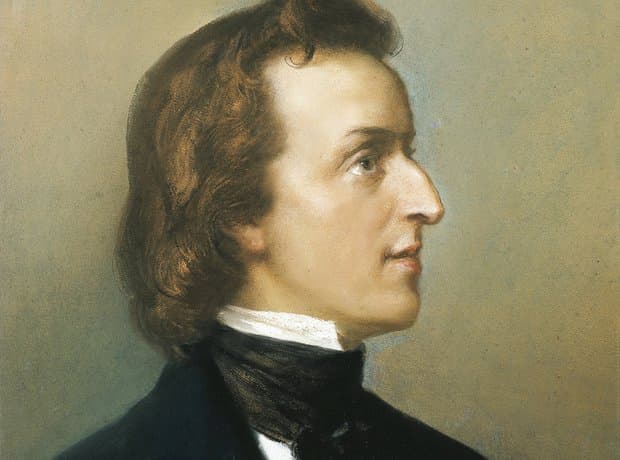
Frédéric Chopin © ClassicFM
Jane Stirling’s Childhood
Jane Wilhelmina Stirling was born 15 July 1804 in Perthshire in central Scotland. She was the daughter of John Stirling of Kippendavie, a wealthy landowner who had property in Scotland and the West Indies, and his wife Mary.
Jane was born into a big family: she had twelve older siblings! Tragically, her mother died when she was a child, and then her father died a few years later. The grieving teenage heiress moved in with her older sister Katharine Erskine, a young and independent widow.
Despite the tragedies of her teenage years, Stirling proved to be a social butterfly. She loved the arts, playing the piano, and going to dances and balls. As the legend goes, over thirty men proposed to her, but she turned them all down because she never fell in love with any of them.
Young Adulthood in Paris
In 1826, when Stirling was twenty-two, her older sister brought her to Paris. The sisters loved the city so much that they began to live part-time in France.
When the time came for Stirling to choose a Parisian piano teacher, she chose Frédéric Chopin, a mutual acquaintance of her former teacher, pianist Lindsay Sloper. Chopin and Stirling became friends. Chopin respected her and her musicianship enough to pass along one of his students to her, and in 1844, she was thrilled to find out that he dedicated two nocturnes to her (the pair in his op. 55).
At the time, Chopin was in the midst of an unraveling relationship with author George Sand, and he was trying to come to grips with his new lifestyle. Stirling wanted to help. So they came to an unconventional arrangement: Stirling would serve as a kind of agent and business manager to help keep Chopin’s life running smoothly. She even took on arranging his concerts and worked with him on assembling the French-bound volumes of his works.
George Sand’s daughter wrote about Stirling and Erskine:
“During lessons, when you visited the Master you could meet two tall persons, typical Scottish women, skinny, pale, in indefinite age, serious, dressed in black, never smiling. Under this quite gloomy appearance, there were lofty, noble, and devoted hearts.”
Chopin’s Helper
Stirling seems to have been rather omnipotent in Chopin’s life during this time. She saw to all of the details of his famous Salle Pleyel concert in February 1848, down to the temperature of the auditorium and the choice of flowers. He played a Mozart piano trio, his cello sonata, and some relatively undemanding pieces for solo piano. After the concert was done, he staggered backstage to Stirling and collapsed in her arms. It would be his last Paris concert. In March, revolution broke out, and many of Chopin’s aristocratic supporters fled the country.
A couple of months later, Stirling arranged for him to visit London. Chopin dreaded the rigors of traveling, but he needed the money badly, so in the spring of 1848, they set off together.
Chopin’s Last Tour – And a Proposal?
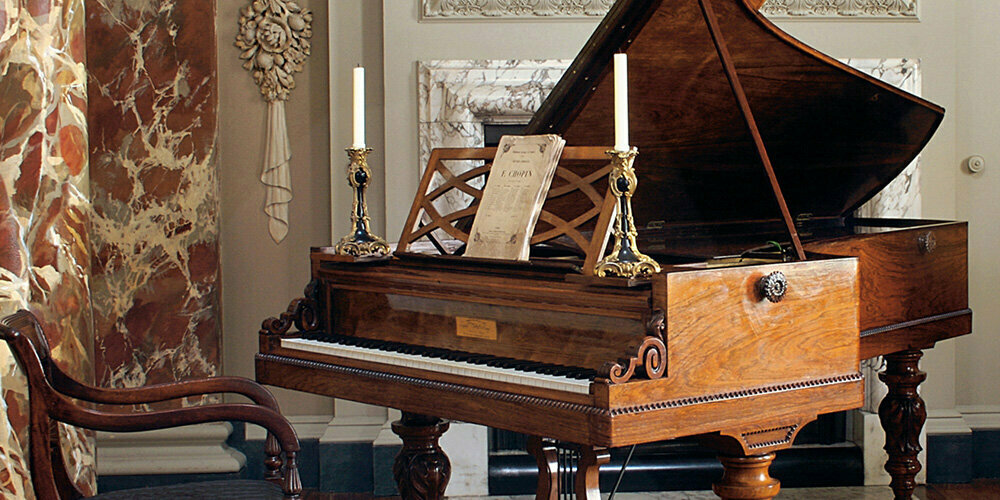
Chopin’s Pleyel grand piano, 1848 (The Cobbe Collection, UK)
While in London, Chopin ended up keeping three pianos in his room from three different makers. His furious landlord doubled the rent, but Stirling stepped in to cover the cost for him. The social highlight of this English visit came when he performed for Queen Victoria and her husband Prince Albert at a private party.
After the stay in London, he took the train to Edinburgh, per Stirling’s suggestion. He played in Manchester, Glasgow, and Edinburgh. Tickets were expensive – and Jane purchased many of them herself, then gave them away for free. Ominously, while Chopin was in Edinburgh, feeling that he would not live much longer, he drew up a will.
Rumors swirled of an impending engagement between the sick man and his energetic promoter, but Chopin never made a formal offer of marriage. Something about Stirling grew to irritate him – maybe his growing weakness and his increasing dependence on both her and her sister. He wrote things to friends like “A rich woman needs a rich husband” and “They have married me to Miss Stirling; she might as well marry death.” The sisters’ enthusiastic promotion of Protestantism was also proving to be extremely grating.
Chopin’s Death and Its Aftermath
In November 1848, Chopin left the gloomy British Isles to return to Paris. He was deeply in debt, and Stirling quietly paid those debts off. His condition only deteriorated. Over the course of 1849, it became clear that Chopin’s death was imminent. After much suffering, in October he passed away from what is generally believed to have been tuberculosis.
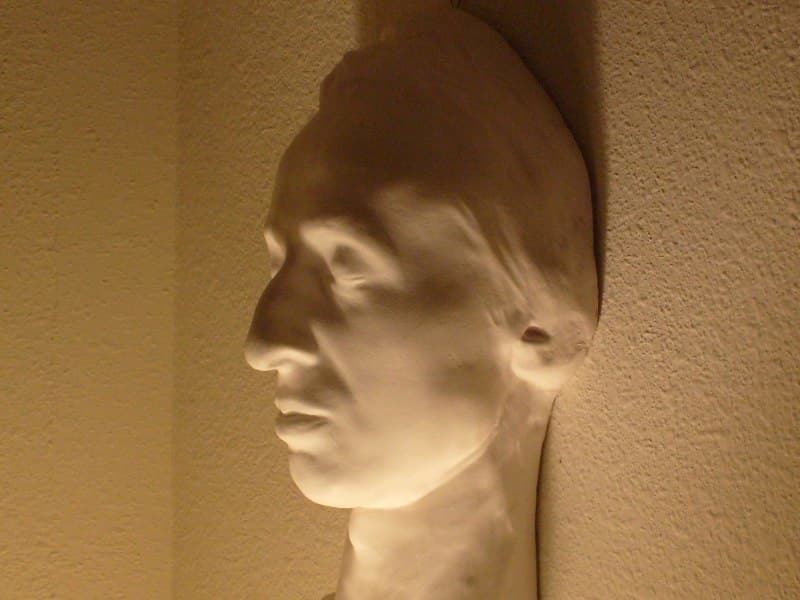
Chopin’s death mask © Wikipedia
After he died, Stirling dressed in mourning black, as if her husband had passed away. She paid the cost of his extravagant funeral at Paris’ famous La Madeleine (although Chopin’s sister Ludwika eventually paid back the cost), and it was attended by thousands. Fearing unscrupulous thieves or souvenir hunters, it is believed by historians that she was likely the anonymous buyer who purchased much of Chopin’s estate, including his famous death mask, to distribute to those who loved him. She also saw that his preserved heart would be brought from Paris to Warsaw.
A portrait she’d commissioned of Chopin by Polish artist Teofil Kwiatkowski turned into a deathbed portrait. Pictured in the portrait is Chopin, dressed in white, and surrounded by the dark-clothed figures of author Aleksander Jełowicki, Chopin’s sister Ludwika, piano student Marcelina Czartoryska, Polish politician Wojciech Grzymała, and the artist. Stirling is nowhere to be found: she’s already slipping into the background of the historical record.
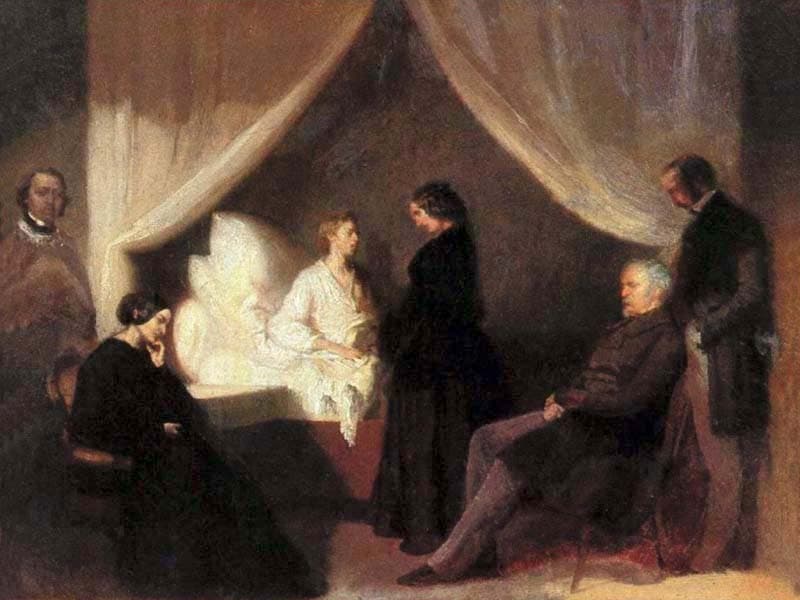
Chopin on His Deathbed, by Kwiatkowski, 1849, commissioned by Jane Stirling.
To mark the first anniversary of his death, Stirling wrote to Ludwika asking for a handful of Polish soil so that she could sprinkle it on Chopin’s grave. The request was granted. In a particularly moving gesture, Stirling paid to have one of Chopin’s pianos shipped to Ludwika, and the two women carried on a considerable correspondence after his death, tending to matters of his legacy.
Intriguingly, according to legend, Chopin told Stirling – and Stirling alone – his true date of birth. She is said to have written it down, placed it in a box, and buried it with him.
Stirling’s Post-Chopin Life and Legacy
Stirling lived for another decade after Chopin’s death and died of an ovarian cyst in 1859. She never married. She left most of Chopin’s estate to his mother. It ended up in a palace in Warsaw, where it was destroyed by Russian troops in 1861.
Jane Stirling may not be nearly as famous as Chopin’s other caretaker figure, George Sand, but she was certainly one of his most faithful friends and one of the people we have to thank today for helping to preserve the rich musical legacy that her friend and teacher left behind.
Tony Bennett, last of classic American crooners, dead at 96
AT A GLANCE
- Raised in an era when big bands defined US pop music, Bennett achieved an improbable second act when he started winning over young audiences in the 1990s -- not by reinventing himself but by demonstrating his sheer joy in belting out the standards.

Tony Bennett (Facebook)
Tony Bennett, the last in a generation of classic American crooners whose ceaselessly cheery spirit bridged generations to make him a hitmaker across seven decades, died Friday in New York. He was 96.
Raised in an era when big bands defined US pop music, Bennett achieved an improbable second act when he started winning over young audiences in the 1990s -- not by reinventing himself but by demonstrating his sheer joy in belting out the standards.
And then at age 88, Bennett in 2014 became the oldest person ever to reach number one on the US album sales chart through a collection of duets with Lady Gaga -- who became his friend and touring companion but only one of a long list of younger stars who rushed to work with the singing great.
Bennett's publicist, Sylvia Weiner, announced his death.
Likened since the start of his career to Frank Sinatra, Bennett first tried to distance himself but eventually followed much of the same path as other crooners of yore -- singing in nightclubs, on television and for movies, although his attempts to act ended quickly.
His gift proved to be his stage presence.
With a welcoming smile and dapper suit, he sang with gusto and a smooth vibrato in a strong, clearly enunciated voice, which he kept in shape through training from the operatic Bel Canto tradition.
Starting with his recording of the film song "Because of You" in 1951, Bennett sang dozens of hits including "Rags to Riches," "Stranger in Paradise" and, in what would become his signature tune, "I Left My Heart in San Francisco," which landed him two of his career's 19 Grammy Awards.
But the British Invasion led by The Beatles initially took a toll on the singer, whose music suddenly sounded quaint and antiquated. He nearly died of a cocaine overdose in 1979 before sobering up and eventually reviving his career.
"When rap came along, or disco, whatever the new fashion was at the moment, I didn't try to find something that would fit whatever the style was of the whole music scene," Bennett told the British culture magazine Clash.
"I just stayed myself and sang sincerely and tried to just stay honest with myself -- never compromising, just doing the best songs that I could think of for the public.
"And luckily it just paid off."
Singing as hardscrabble youth
Tony Bennett -- his stage name came after advice from showbiz A-lister Bob Hope -- was born Anthony Dominick Benedetto in the Astoria neighborhood of New York's Queens borough.
His father was a struggling grocer who immigrated from southern Italy's Calabria region, to which his mother also traced her ancestry.
He showed early promise as an entertainer, singing at age nine next to legendary New York mayor Fiorello LaGuardia when he ceremonially opened the city's Triborough Bridge, now known as the Robert F. Kennedy Bridge.
But his father's death at age 10, at a time when the United States was still struggling to exit the Great Depression, led him to leave school and earn money through jobs including singing at Italian restaurants and caricature painting, which remained a lifelong side career.
During World War II, Bennett was drafted into the 63rd Infantry Division and was sent to France and Germany. But he was demoted after cursing out an officer from the South who objected to Bennett dining with an African American friend in the then racially segregated army.
As punishment, Bennett spent his tour of duty digging out bodies and shipping them. But after the Allied victory, Bennett found an unexpected break into music as he waited with fellow troops in Wiesbaden, Germany to return home.
With the city's opera house still intact, a US Army band performed a weekly show to be broadcast on military radio across Germany. Taken on as the band's librarian, Bennett quickly impressed with his voice and was made one of four vocalists.
"During this period in the army, I enjoyed the most musical freedom I've ever had in my life," Bennett later wrote in his autobiography, "The Good Life."
"I could sing whatever I wanted, and there was no one around to tell me any different," he wrote.
Outspoken against racism and war
When he returned to the United States, he took formal singing lessons through the GI Bill, which covered educational expenses for returning troops.
His experiences made Bennett a lifelong liberal. He became especially enraged in the 1950s when he played in Miami with jazz pioneer Duke Ellington, who was not allowed to attend a press party due to segregation at the hotel.
In a then risky move for a popular entertainer, he accepted an invitation from singer Harry Belafonte to join civil rights icon Martin Luther King in the 1965 march from Selma, Alabama in support of equal voting rights for African Americans.
He later wrote in his memoir that the hostility of the white state troopers reminded him of Nazi Germany.
He was also an outspoken opponent of war, at times raising controversy.
"The first time I saw a dead German, that's when I became a pacifist," he told popular radio host Howard Stern days after the September 11, 2001 attacks.
Late in life, still cool
Bennett was married three times and had four children including Antonia Bennett, who has followed his path as a singer of pop and jazz standards.
But his son Danny Bennett was most instrumental in his father's career, aggressively courting MTV and other players in the pop world as a manager for his father.
By the early 1990s, Bennett -- his style and look little changed from the 1960s, except for more gray hair -- was appearing in music videos on MTV and singing warm-up at concerts by alternative rock giants such as Smashing Pumpkins and Porno for Pyros.
Proof that Bennett was back came in 1993 when he presented a prize at the MTV Video Music Awards alongside the Red Hot Chili Peppers, who hailed his cool factor and playfully sang part of "I Left My Heart in San Francisco."
His career only kept building and a decade later, he released three successful albums of duets. On one of them, "Body and Soul," he sang with Amy Winehouse in her last recording before she died in 2011 at age 27.
He marked his 90th birthday with a star-studded concert at New York's Radio City Music Hall, which was turned into a television special and album.
The title was taken from a song popularized by Bennett: "The Best Is Yet to Come."
Bennett toured the United States and Europe into his final decade, playing his last public performance before the coronavirus pandemic halted touring in New Jersey on March 11, 2020.
Soon after, he revealed he had been diagnosed with Alzheimer's disease in 2016. He had kept his condition quiet for years.
Upon turning 95, Bennett played two more birthday concerts, again at Radio City Music Hall, with Lady Gaga -- shows billed as his farewell to New York.
He then canceled the remainder of his 2021 tour dates on "doctors' orders."
"And let the music play as long as there's a song to sing / And I will stay younger than spring," he crooned during the first of his farewell shows, in a rendition of his ballad "This Is All I Ask."
"You've been a good audience," Bennett said prior to his encore. "I love this audience."
Thursday, July 20, 2023
The Breaking of the Fellowship // Christine Nonbo & The Danish National Orchestra
Wednesday, July 19, 2023
You Raise Me Up - Sister Duet - Lucy & Martha Thomas
2023 AOV International Choral Festival: The best choirs from around the world compete
Opening ceremony on July 20, gala concert on July 23

The Cultural Center of the Philippines and the Philippine Madrigal Singers are once again bringing together the best choirs from around the world for the Andrea O. Veneracion (AOV) International Choral Festival. The biennial competition will be held from July 20 to 23, 2023, at the Samsung Performing Arts Theater in Circuit Makati.
Named after the founder of the world-renowned Philippine Madrigal Singers, the late National Artist for Music Andrea O. Veneracion, the choral competition will have 22 choirs competing in the Folk Song, Equal Voices, and Mixed Choir categories.
Competing choral groups from Luzon are: The Archangel’s Journey Chorale from Caloocan City; BINHS’s Salinlahi Serenata Singers from Silang, Cavite; Calasiao Treble Chorus from Calasiao, Pangasinan; Coro Jesu from Makati City; De La Salle University Chorale from Manila; DYCI’s Dagalak from Bulacan; Gloria Patri Singers from Quezon City; Lighter Side Movement from Mandaluyong City; Los Cantantes De Manila from Manila; Oroquieta Chamber Singers from Lucena City, Quezon; Pamantasan ng Lungsod ng San Pablo Chorale from Laguna; Philippine Normal University Chorale from Manila; Philippine Vocal Ensemble from Makati; St. Paul College Pasig High School Chorale from Pasig City; Tarlac Männerchor from Tarlac City, Tarlac; and University of Baguio Voices Chorale from Baguio City, Benguet.

The Visayas and Mindanao representatives are: Silay City Chorale from Silay City, Negros Occidental; Jose Rizal Memorial State University Dimasalang Choristers from Dipolog City, Zamboanga Del Norte; University of Mindanao Chorale from Davao City, Davao del Sur; University of Southeastern Philippines Harmonia Polifonica Chorale from Davao City, Davao del Sur; and Western Mindanao State University - Grand Chorale from Zamboanga City, Zamboanga Del Sur.
The Bangkok Voices from Thailand will also compete.
Five renowned adjudicators who have made their marks in the international music scene will evaluate and assess who will be named the best choral group in the country. The jury is composed of Christo Burger (Africa), Jãnis Ozols (Europe), Virginia Bono (South America), Zimfira Poloz (North America), and Mark Anthony Carpio (Asia).
Each winning choral group in the different categories will take home cash prizes and a conch shell trophy designed by artist Mary Catherine Sta. Ana. The trophy resembles a large conch shell with a wide opening through which one may imagine listening to the sound of the seas that surround the Philippine islands. The parts of the shell suggest the form of a bird singing, taking inspiration from the theory that bird songs may have influenced the development of music. The conch shell is also used as a horn, perhaps to gather the people of a community, or to announce something. Here, it serves as a trophy announcing the grand winners of the choral competition.
The competition will kick off with an opening ceremony on July 20, 7 p.m. This is open and free to the public.
The Folk Song competition will commence on July 21, 5:30 p.m., while the Equal Voices and Mixed Choir competitions will be on July 22, 3pm and 5:30 p.m., respectively. Tickets for these three competitions are priced at Php 300.

The Philippine Madrigal Singers will have a gala concert on July 23, 3 p.m., with ticket prices ranging from P300 to P1500. The Closing and Awarding Ceremonies will also be on July 23, at 6 p.m., open and free to the public.
Ticket discounts apply for students, government employees, senior citizens, PWDs, AOV participating choirs, and group tickets. Tickets can be purchased via Ticket World at https://premier.ticketworld.com.ph/shows/show.aspx?sh=INCHOFES23.
For inquiries about the AOV International Choral Festival, Manila 2023, you may visit https://Culturalcenter.Gov.Ph/Event/Andrea-O-Veneracion-International-Choral-Festival-Manila-2023/ and https://Aovchoralfestph.Com/. Follow the AOV social media accounts on Facebook, Instagram, and Twitter for latest updates.
Monday, July 17, 2023
Catch clarinetist Jason Marquez at Manila Pianos this July 29
‘I decided to incorporate music with popular influences such as jazz, pop, Latin, bebop, and more. I aimed to offer a refreshing departure from the traditional 17th-18th century repertoire commonly heard in recitals.’

I GOT RHYTHM Clarinetist Jason Marquez with pianist Dingdong Fiel and cellist Job Polvoriza at Manila Pianos (Photo Richard Sy-Facunda)
Clarinetist Jason Marquez who just earned a Bachelor’s Degree in Music Performance at the Andrews University in Michigan, USA is all set for a return engagement at Manila Pianos on Saturday, July 29, at 7 p.m.
Manila Pianos is located along Paseo de Magallanes, Magallanes Village, Makati City. He will be accompanied by pianist Dingdong Fiel.
On June 17, Marquez surprised local music aficionados with a rarely played program for clarinet so varied and wide-ranging it left an audience asking for a repeat performance for those who missed it.
A highly revealing opener was Bela Kovacs’ “Sholem-Alekhem, rov Feidman,” a Philippine premiere of Kenji Bunch’s “Cookbook” (2004) and with cellist Job Polvoriza doing a sensitive part in Robert Muczynski’s “Fantasy Trio, Op. 26” (1969).
Marquez’s musicality was evident from the very beginning.
On top of that, he had a way of explaining his repertoire, which made enjoyment easy for the first-timers in this all-clarinet program. “I decided to incorporate music with popular influences such as jazz, pop, Latin, bebop, and more. I aimed to offer a refreshing departure from the traditional 17th-18th century repertoire commonly heard in recitals. I wanted to present something fun and accessible to those who may not be as familiar with classical music. My hope was that this diverse selection would spark curiosity in first-time audience members and encourage them to attend more classical music concerts in the future,” he said.
Still, the Copland concerto and Gershwin’s “I Got Rhythm” were the evening’s beautiful highlights.
The audience roared their approval at Gershwin’s I Got Rhythm. “It is a marvelous arrangement by James Cohn that beautifully captures the essence of simplicity, joy, and exceptional artistry,” he enthused.
Marquez plays on a B-flat Tradition model clarinet by Buffet Crampon.
Before acquiring his instrument, his professors noticed that his previous clarinet was getting in the way of his growth as a musician “After successfully raising the necessary funds, my clarinet teacher and I embarked on a two-and-a-half-hour drive to Ann Arbor, Michigan to meet with a Buffet Crampon clarinet dealer who also happens to be the 2nd/bass clarinet player for the Detroit Opera Orchestra.”
Marquez distinctly remembers the dealer presenting approximately 20 different clarinets from various models by Buffet Crampon for him to try. “We meticulously narrowed down the options to three clarinets, which I took home to playtest for a few weeks. This trial period allowed me to thoroughly assess and evaluate each instrument before making my final decision,” he recounted.
In addition, his clarinet teacher ordered several clarinets from Royal Global for him to playtest. “I had the fortunate opportunity to test these clarinets at the Howard Performing Arts Center, which is our on-campus concert hall. My teacher recorded and attentively listened to how the clarinets sounded and projected within the concert hall setting. Based on the evaluation, we ultimately made a final decision on the clarinet I am currently using,” Marquez said.
Pianist Dingdong Fiel admitted it was a tough repertoire they played at Manila Pianos. “It was a very challenging program but definitely worth it.”
Marquez sums up his Andrews University schooling: “My overall experience at Andrews University was amazing. I had the opportunity to meet incredible musicians whom I am proud to call my friends. The professors were dedicated and showed genuine care for their students. My clarinet teacher, Jason Gresl, is an exceptional and dedicated educator. The lessons and coaching sessions I had with him were some of the best in my musical journey.”
By insistent public demand, Manila Pianos will present Jason Marquez with Dingdong Fiel and cellist Job Polvoriza in a repeat performance on July 29,7 p.m. For tickets, call 09065104270 or email artsnewsservice@gmail.com.
Sunday, July 16, 2023
Friday, July 14, 2023
WIND BENEATH MY WINGS (Lyrics) - BETTE MIDLER
Famous Quotes from Wolfgang Amadeus Mozart
by Hermione Lai, Interlude
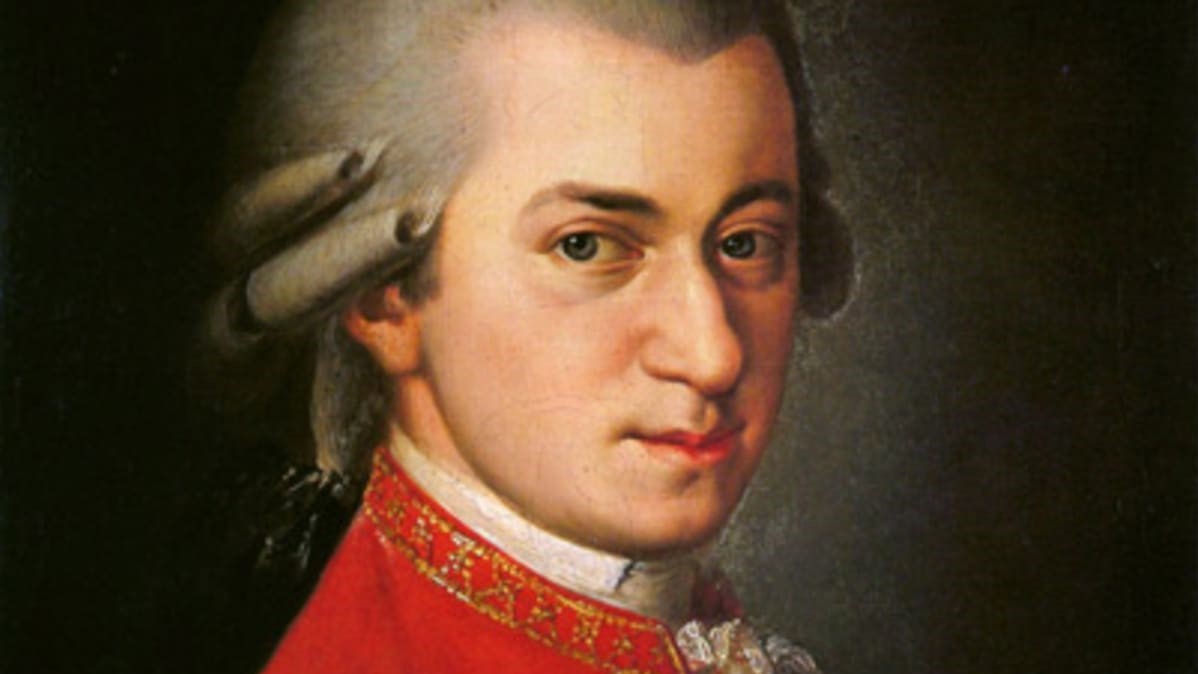
Wolfgang Amadeus Mozart
If we can trust current scholarly opinion, Mozart was a distinguished letter writer. In fact, he is described as “the most eloquent among musicians of his time.” During his travels he was a faithful correspondent, he wrote loving letters to his wife, and long money-seeking letters to friends and patrons. And as we all know, he also wrote some rather naughty letters to his cousin. As an artist profoundly inspired by the theatre, Mozart was an exceptional judge of character. And his letters are not “exotic discoveries suitable for being marveled at in a distant cabinet, but are bearers of communications.”
The Mozart letters are full of both trivial and important observations about the people he met, comments on the reactions to his music, satirical remarks on incompetent professions, thoughts on other composers, the process of performing, and his own methods of composition. But writing a blog on famous quotes from Wolfgang Amadeus Mozart is not so easy. His use of language, his “use of dialect, semantics, and phonology can be difficult for the 21st-century readers to fully understand.” Nevertheless, here are some famous quotes from Wolfgang Amadeus Mozart that present an informal and intimately detailed portrait of a genius.
“Nothing is more enjoyable than a quiet life and to obtain that, one must be industrious”

Mozart’s letters
As he wrote to his wife on 8 October 1791, Mozart was probably longing for a life exclusively dedicated to music, without all that financial stuff. He did have a habit of exaggerating his financial difficulties, but he certainly liked fine clothing, expensive apartments, and enjoyed living beyond his means. Some commentators have suggested that he might well have had a gambling problem as well. But one thing is for sure, he was incredibly industrious as a composer. The amount and quality of music composed during his short life is simply staggering. He left us roughly 800 works in virtually every genre of his time of the highest possible quality imaginable.
“Friends who have no religion cannot be long our friends”
Mozart was baptized a Catholic, and the church played an important role in his life. He was raised in a strict religious household with his father enforcing family prayer, fasting, the veneration of saints, regular attendance at mass, and frequent confession. In the words of Leopold Mozart, “God must come first! From his hands, we receive our temporal happiness and our eternal salvation.”
It is hardly surprising that the above famous quote from Wolfgang Amadeus Mozart originates in a letter written to his father in 1782. However, Mozart’s relationship to religion was ambivalent, and his famous quote does not provide reliable information about his convictions but is probably a disguise in order to please his father. But that doesn’t mean that he didn’t compose some of the most spiritual and devotional religious music in existence.
“Constanze is not ugly, but anything but beautiful; all her beauty consists of two little black eyes and a handsome figure”
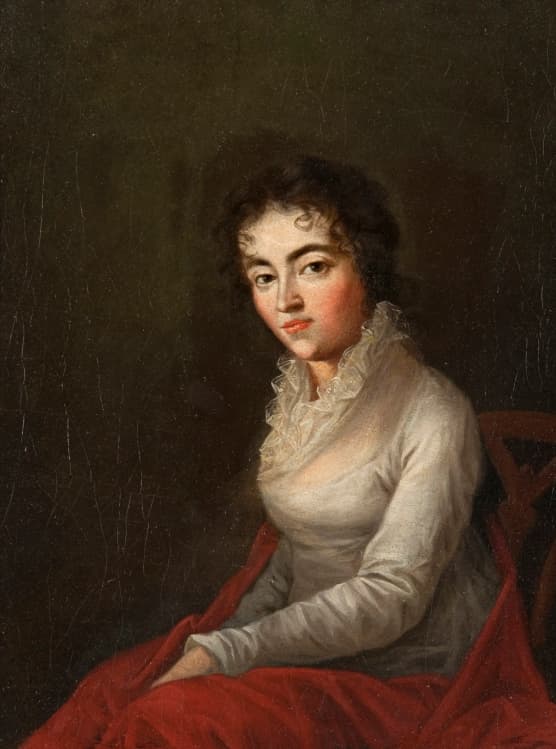
Constanze Mozart
Wolfgang Amadeus Mozart married Constanze Weber on 4 August 1782. Their courtship had not been smooth, and the relationship faced stiff opposition from Leopold Mozart. Leopold did not consider Constanze a good match for his son and didn’t want the marriage to go ahead. A good many letters went back and forth, with Mozart praising the talents of his love and Leopold refusing to let his mind be changed.
It probably didn’t help that the couple moved in together before they were married, making it a real disgrace for the time. Her mother threatened to call the police if she didn’t return home. In the end, Leopold could not prevent the marriage and in order to save face, his consent arrived in the mail one day after the happy event.
“To win applause one must write stuff so simple that a coachman might sing it”
Wolfgang Amadeus Mozart always placed great emphasis on elegant, natural, and singing melodies. He always wanted to communicate through melody. Mozart was essentially an operatic composer, and that particular style carried over into his instrumental works as well. In order to effectively perform Mozart’s music, we need to think like an opera singer but with simplicity of melody that can be easily sung by a coachman as well. In a related famous quote, Mozart wrote, “Melody is the essence of music.”
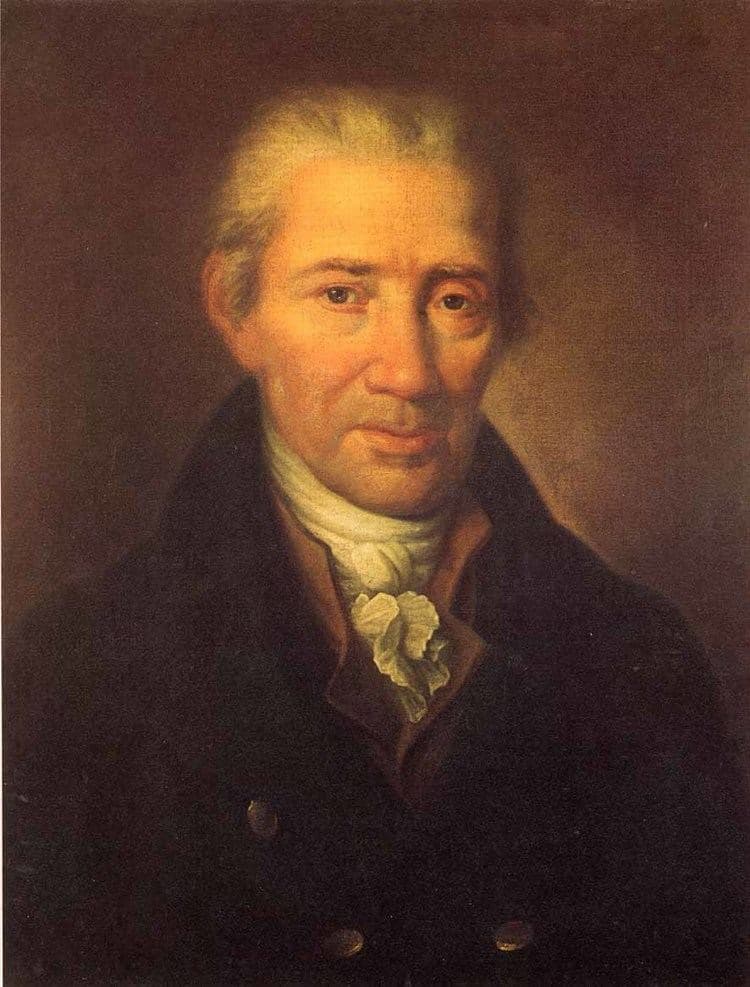
Antonio Salieri
To be sure, Mozart melodies are some of the most memorable pieces of music ever written. Mozart melodies are frequently described as flowing and beautiful, with an unmatched lightness and elegance. Some writers compare them to the sounds of a flowing river or the gentle flutter of a butterfly’s wing. But while they are light and airy, they have deep emotional qualities. Mozart’s melodies have a way of touching the soul and stirring emotions. Remember the Salieri movie, when the jealous composer commented upon hearing a Mozart melody that he had heard the voice of God?
“It is a mistake to think that the practice of my art has become easy to me. I assure you, dear friend, no one has given so much care to the study of composition as I”
Wolfgang Amadeus Mozart was a true child prodigy, and he is very often considered an exceptional and singular musical genius. As a performer, he quickly acquired superstar status and began to compose at the tender age of five. He completed his first symphony before celebrating his eighth birthday and finished his first opera by the age of twelve. And while his natural ability is undisputed, he remained a student throughout his life.
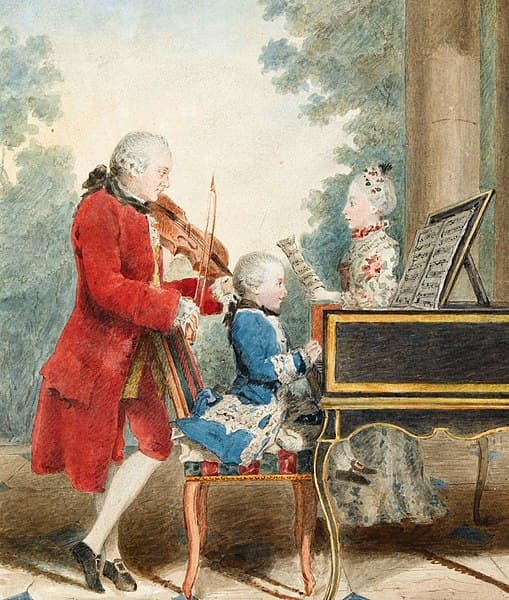
The Mozart family playing chamber music
Mozart unrelentingly integrated, synthesized, and transformed stylistic and musical conventions to produce compositions of universal appeal and stunning individuality. There simply seems to have been no genre or compositional technique in which Mozart was not comfortable. Mozart certainly worked on his compositional craft after he moved to Vienna, and for the first time saw musical manuscripts by J.S. Bach and Handel. He immediately started a concentrated study of counterpoint and began to improvise fugues in the style of Bach. And it was the synthesis of the Classical and learned styles of music that made the true genius of Mozart’s music.
“How popular I would be if I were to lift the national German stage to recognition in music!”
Music had always played an essential role in the daily lives of Habsburg royalty. However, music at court and the opera had been dominated by the highly popular Italian style. However, Emperor Joseph II was eager to challenge that convention by advocating the “Singspiel,” a German-language music drama. His push for an autonomous German opera brought Wolfgang Amadeus Mozart in direct competition with Antonio Salieri. Salieri was a well-respected star, and Mozart was the new kid in town when the Emperor challenged both composers to write an opera on the same subject, one in the Italian style and the other taking up the challenge for German opera.
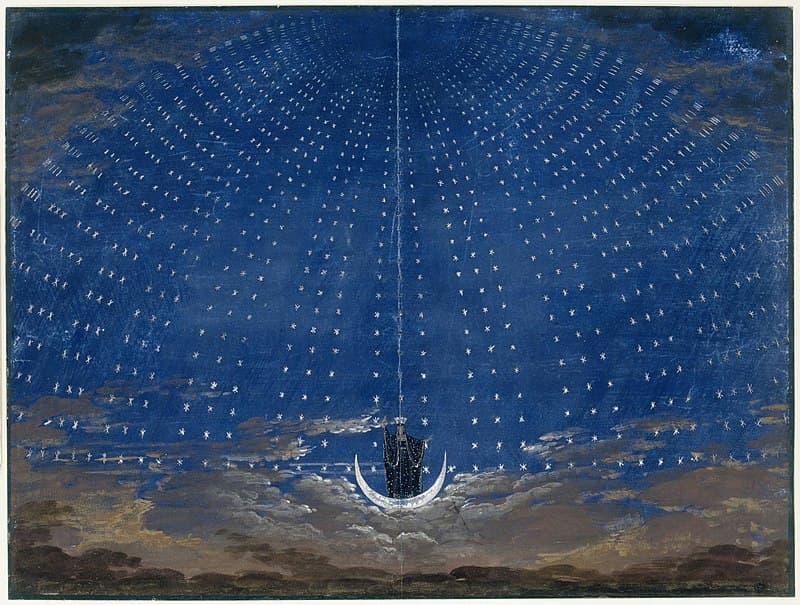
Karl Friedrich Schinkel: Stage set for the Queen of the Night (in Mozart’s Magic Flute)
It wasn’t much of a competition as Salieri’s Prima la Musica, poi le Parole (First the Music and then the Words) in the fashionable Italian style, soundly defeated Mozart’s Schauspieldirector (The Impresario). The plan of the Emperor, who was hoping for Mozart and German opera to win the day, failed badly that evening. However, Mozart soon demonstrated his mastery of both genres with Le nozze di Figaro and the Magic Flute. And in the end, of course, he did accomplish what he set out to do in his famous quote.
“I care very little for Salzburg and not at all for the archbishop; I shit on both of them”
The city of Salzburg has always been a small but pretentious provincial town. A few selected families got very rich from the salt trade, and they controlled and dominated virtually all aspects of civic and ecclesiastical life. That ruling civic elite had very little interest in having a gifted composer interfere with their conservative practices. Mozart was the musical servant of Archbishop Hieronymus von Colloredo, and he was well aware of Mozart’s distaste for the city and for his own person.
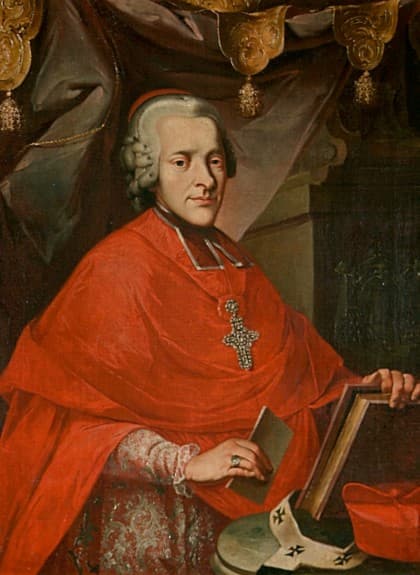
Hieronymus von Colloredo (1732-1812), Prince-Archbishop of Salzburg
The Archbishop became exceptionally annoyed with Mozart’s frequent absences resulting in a number of heated arguments. Breaking with the Archbishop was not going to be easy, and Mozart lobbied and even begged his father for support. He wanted to be a freelance musician, and was rightfully tired of being “spoken to as if I had been some miserable beggar.” Their working contract was resolved in May 1781, when the chief chamberlain delivered a swift kick to Mozart’s backside. Isn’t it ironic that present-day Salzburg continues to reap the financial rewards of a relationship that never existed?
“Death, when we come to consider it closely, is the true goal of our existence”
Wolfgang Amadeus Mozart lived during a period of history when high mortality was simply a fact of life. Several of his siblings died in childhood, and the union of Wolfgang and Constanze produced six children, but only two survived infancy. Wolfgang was deeply affected by the death of his father, and his mother died of a long and painful illness. His own health had started to deteriorate at the age of five. He suffered from rheumatism, which frequently caused kidney infections that confined him to bed.
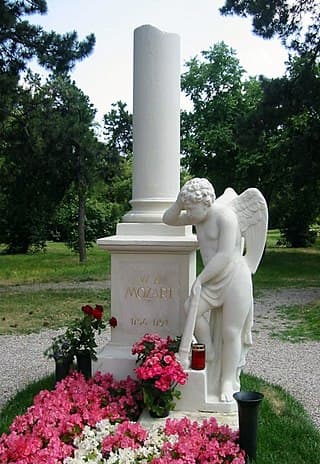
Austria, Vienna, St. Marx Cemetery, The gravestone of Wolfgang Amadeus Mozart
Mozart had plenty of time to consider his own mortality, and he writes, “I have formed during the last few years such close relationships with this best and truest friend of mankind that death’s image is not only no longer terrifying to me, but is indeed very soothing and consoling, and I thank my God for graciously granting me the opportunity… of learning that death is the key which unlocks the door to our true happiness. I never lie down at night without reflecting that, young as I am, I may not live to see another day.”
“Shit in your bed and make it burst”
The nine surviving letters by Wolfgang Amadeus Mozart to his cousin Maria Anna Thekla Mozart are known as the “Bäsle Letters.” She was the daughter of one of the brothers of Mozart’s father Leopold, and in his letters Mozart famously uses direct and frank language, which is sometimes drastically vulgar and spiced with anal-erotic fantasies. This kind of scatological humor has puzzled scholars, and more recently, it is claimed to originate in psychiatric conditions from which Mozart supposedly suffered.
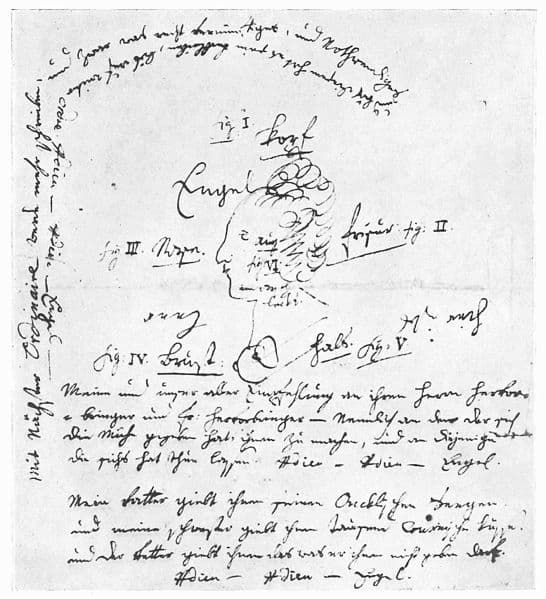
A drawing by Mozart in his Basel Letters to her cousin Maria Anna Thekla
For some commentators, “Mozart was able for a moment to forget the continuous pressures of an uncertain future, and allowed his light-hearted and humorous side of his character to come through.” One thing for sure, “these letters embarrass us, and we have tried to suppress them, trivialize them, or explain them away with pathological excuses.” It might well be that 18th-century scatological humor was far more public and mainstream, and it might well have suggested a political dimension. In a letter to his father, he describes the aristocrats present at a concert in Augsburg as “Duchess Smackarse, Countess Pleasurepisser, the Princess Stinkmess, and the two Princes Potbelly von Pigdick.”
“What’s even worse than a flute? – Two flutes!”
We still don’t know for certain if this famous quote can be wholly attributed to Wolfgang Amadeus Mozart. However, we do know that he did not like the sound of the solo flute and found it difficult to compose for the instrument. As he was struggling to fulfill a commission for the wealthy amateur flautist he truly loathed, he writes to his father. “I never have a quiet hour here… besides, one is not always in the mood for working. I could certainly scribble things the whole day long, but when a composition of this kind goes out into the world, naturally I do not want to be ashamed of my name on the title page. Moreover, you know I am quite powerless to write for an instrument (the flute) which I cannot bear.”
As we might well imagine, countless famous quotes by Wolfgang Amadeus Mozart have been misattributed. I guess, if you are famous and dead, people are ever so happy to put words in your mouth. What is your favorite Mozart quote?